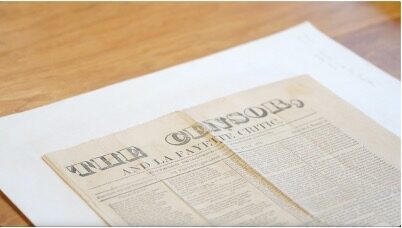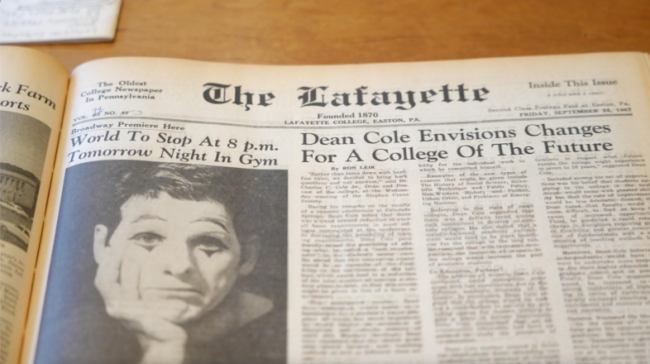By McKenna Graf and Emma Hetrick, Lafayette College
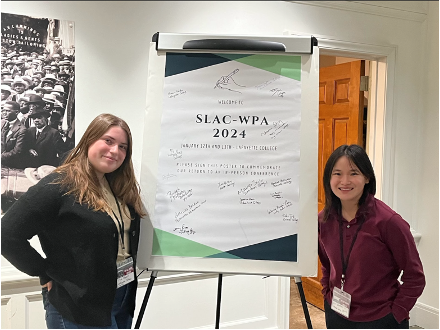
Students and faculty of the Lafayette College Writing Program (CWP) have been embarking on a journey through their history. Leading with passion, we have been investigating how we operated in the past and how that might inform and improve our future. In Fall 2023, we started by gathering information on alumni, sorting through archival material about writing all over campus, and interviewing past employees of the program. With these seedlings of our project, we were able to present our research at the historic Hotel Bethlehem on Friday, January 12, 2024.
Faculty and administrators arrived at the Small Liberal Arts Colleges-Writing Program Administrators (SLAC-WPA) Conference, as eager to share research as to learn. Our little Lafayette cohort found its way to the Lafayette room and prepared to present. It was the first time presenting at a conference for a few of us, and the professional experience we gained was invaluable. For instance, one avenue that Emma Hetrick, the College Writing Program Coordinator, has begun investing in involves real-world applications for the work students are doing in the writing room.
While going to conferences creates meaningful experiences, pairing this with research about our history feels even more impactful, since it allows us to see how much we as a program have grown and to develop practices that we might want to initiate. Connecting with living members from the beginnings of the program (and there are quite a few) and learning how they applied their skills from CWP helps us to deepen our understanding of the program’s value.
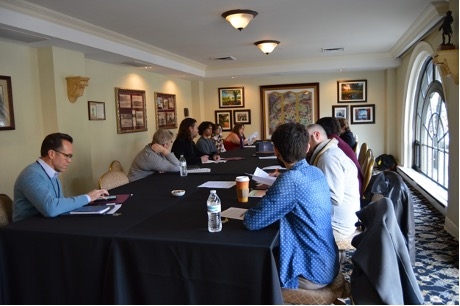
At the SLAC-WPA conference, we not only learned from other writing centers but also were offered attentive listening and respect for our work. Attendees asked thoughtful questions of Lafayette students, who were able to demonstrate their knowledge and professionalism. The student documentarians working on the project were also able to share the short documentary they made, showcasing the interdisciplinary passion among members of the team.
While the conference represented only one step in our research journey, as our goalpost for the fall semester, it felt substantial. We can say with confidence that the work we presented was significant, and our discussions invigorated us to go further with our research. This research has become a powerful asset to our program as it informs how we want to operate, as well as the way we value the skills we are learning as writing advisors. As we garner this knowledge, our goal is to share it more broadly with the writing center community (the Lafayette campus and beyond).

CWP was established at Lafayette in 1987. Patricia (Pat) Donahue, an English professor, was the founding director. CWP was designed to support student writing through a robust writing-centered curriculum and a peer reviewer program. Today, the CWP is led by three administrators with a staff of 40–60 student workers (writing associates, commonly referred to as “WAs”) in any given semester. We manage the integration of writing into courses, support faculty development in writing pedagogy and assignment design, and provide feedback on writing-in-progress to students across campus through our writing associates program. The College Writing Program is physically located in the William W. Watt Writing Room on campus, named after an English professor who taught at Lafayette from 1935–1978. In 1952, Watt published the textbook American Rhetoric, which became a classic reference volume for student writing.

The College Writing Program and Lafayette Special Collections both contain a wealth of information about the history of writing on campus. With this project, we hoped to tap into that store of information and create a more centralized and complete story to draw from as we look to develop new programming, events, structures, and guidance. In doing so, we not only wanted a more internally complete record, but we also wanted to be able to showcase CWP’s history and the history of writing on campus through additional visual displays in the writing room. Just as important, we wanted to develop a project that would bring together faculty, students, staff, and alums associated with CWP. We believe that for this project to be useful it must come out of our students’ interests, because their learning is ultimately at the heart of what we do.
In order to create a record, we set out even more concrete goals: to create a comprehensive list of past writing associates based on roster data, to visit the college archives, and search the online database to canvass what writing artifacts might exist. Referencing spreadsheets that spanned back to 2007, students compiled contact information of alumni to reference. The goal of this database was twofold: to have a resource for students to reach out to a larger community and make connections, and identify alumni to interview and grow professional relationships with.
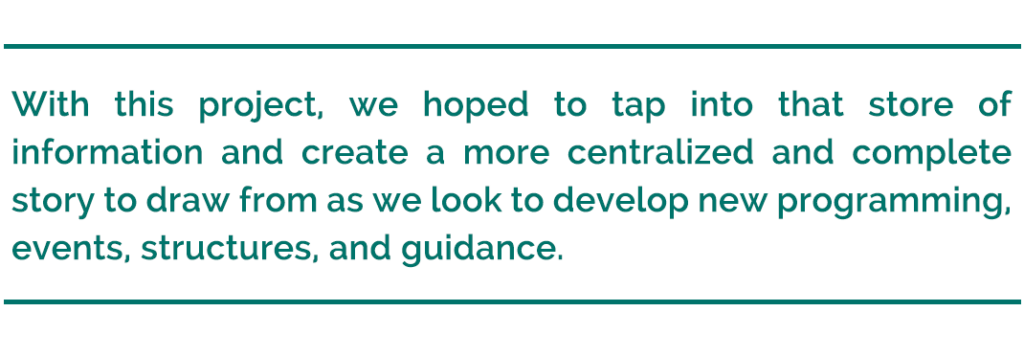
Visiting the college archives, students were shown concrete examples of how writing has been important to the campus over time. We were able to see also how it was significant not only academically but also creatively. Finding the different disciplines on campus that use writing empowered students to bring this energy of writing’s importance to their research. From our visit to the archives, we were able to gain a clearer sense of what we wanted to look for in the online database. Additionally, we were able to identify artifacts that we wanted to continue to work with in order to emphasize that importance to the larger campus. Student documentarians working on the project recorded footage on this trip, which proved invaluable not only for their documentary on the project but also for sharing our research with others. The documentary also included interviews from stakeholders (directors, coordinators, and a WA involved in the College Writing Program), which allowed for an interesting conversation about the past, present, and future of the program that can be referenced for years to come.
By searching the archives, we sought to identify the artifacts that we might scan and bring to our writing room. Our goal of collecting artifacts from the archives ties to our motives for the project in general. The portrait of William Watt in the William Watt room sparked a controversy because its presence as the only artwork in the room seemed unrepresentative of the program’s rich history, let alone its present, and in an effort to create a more inclusive atmosphere in the writing room, we wanted to find artifacts that would reflect this and that we could display. In curating this space, we hope to draw people to the writing room in order to learn and to get involved in the future of all we can do with writing. In the spring semester, students worked on identifying these artifacts and bringing those scans to the writing room. We are hoping not only to continue to grow that relationship with the college archives as we utilize that resource but also to give back to them as we look toward future goals.
We hope to take this research and use it to build a more inclusive atmosphere: to celebrate all that we have accomplished as a writing program, while recognizing gaps, or places where we’ve fallen short. There are many avenues we can go down, and the great thing about this project and our history is that every day we are learning something new about who we are and what we can do.
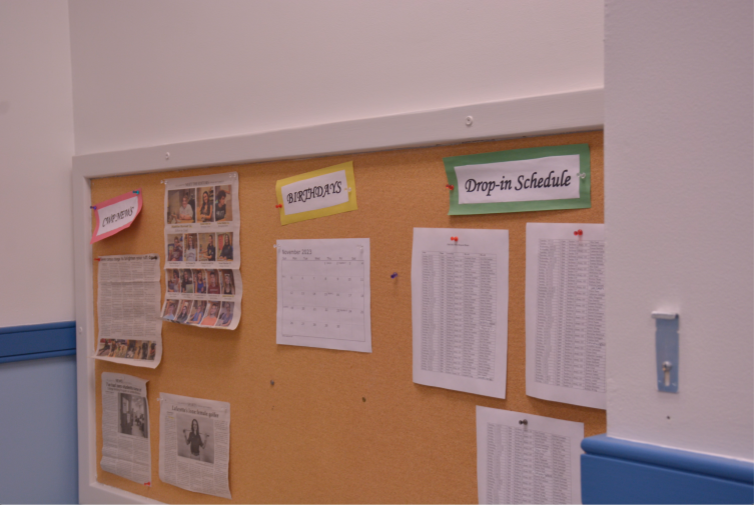
In bringing scans of artifacts into the writing room and creating panels of alumni to help current students apply these skills to their future, this project is rooted in curiosity about history. But it also has practical applications that will help students and faculty in the longer term. As part of this process, we are taking the necessary steps to archive some of our own materials—such as WA rosters, alumni databases, literacy narratives that every incoming WA writes, etc.—so that they might be accessed easily, both internally and potentially externally, for years to come. We are interested in creating new platforms, such as a LinkedIn page, and in updating our website to connect more easily with our alums and to expand the reach of our project to the greater Lafayette community. Further, we hope that this project provides a roadmap for other writing programs interested in learning about their own history. Our experience at the conference not only provided us with new ideas going forward but also inspired other programs to engage in this work of recovery.
We have a wealth of information at our disposal, and it is our duty to organize that information in order to maximize its usefulness and the program’s influence. This represents our best efforts to learn from and respond to our history as we shape what our writing program looks like in the future.
McKenna Graf (she/her) is a sophomore double majoring in English (Writing Concentration) and Film & Media Studies. She is employed as a Writing Associate (WA) with the College Writing Program and is passionate about spreading the word about the importance of writing for all!
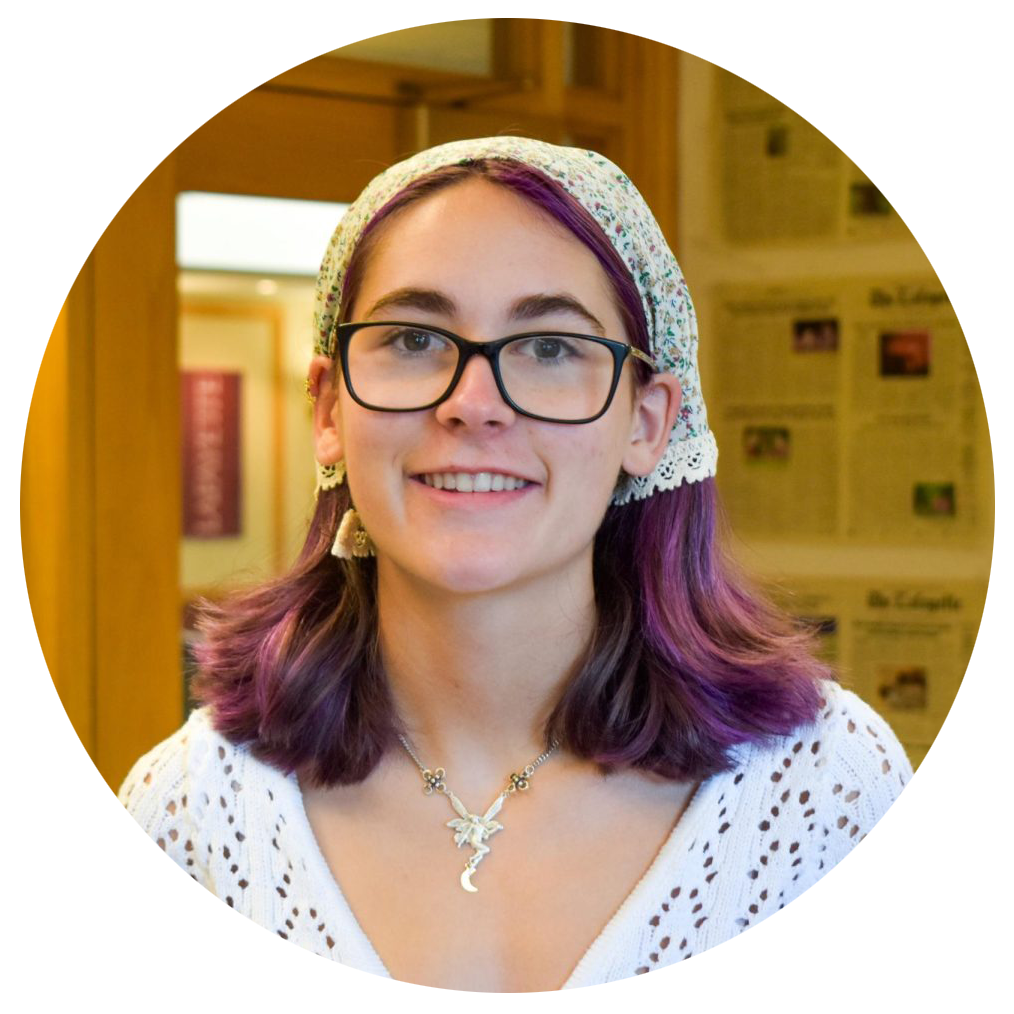
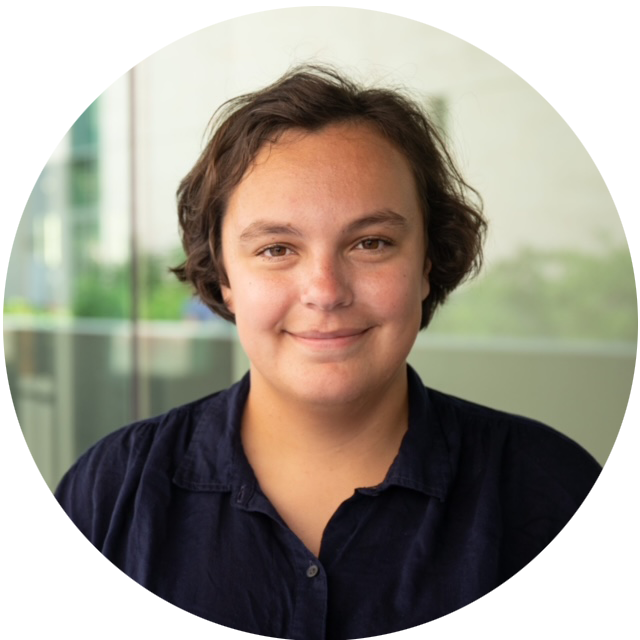
Emma Hetrick (she/her) is the Coordinator of the College Writing Program. In this capacity, she supervises and provides training for 40–60 undergraduate writing associates and supports writing-related programming on campus.


![Another Word Blog Post_Pic6 Box of files of archival materials found during a trip to Lafayette College’s special collections [photo credit: Joshua Chait]](https://dept.writing.wisc.edu/blog/wp-content/uploads/2024/07/Another-Word-Blog-Post_Pic6-650x366.png)
